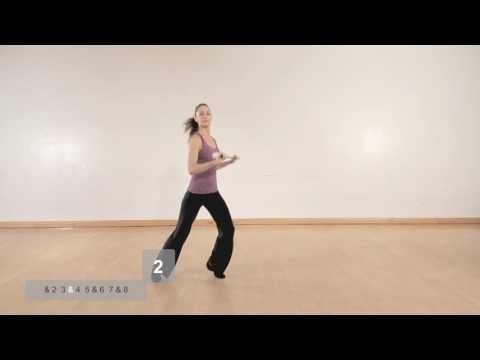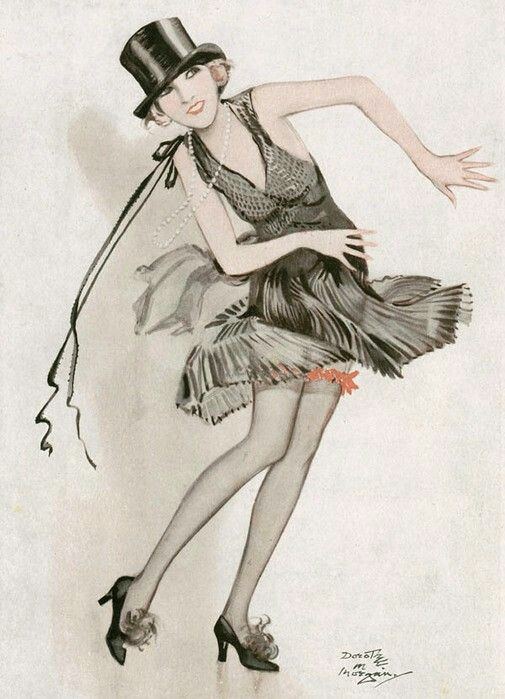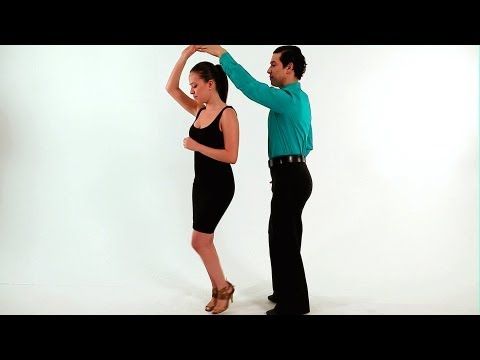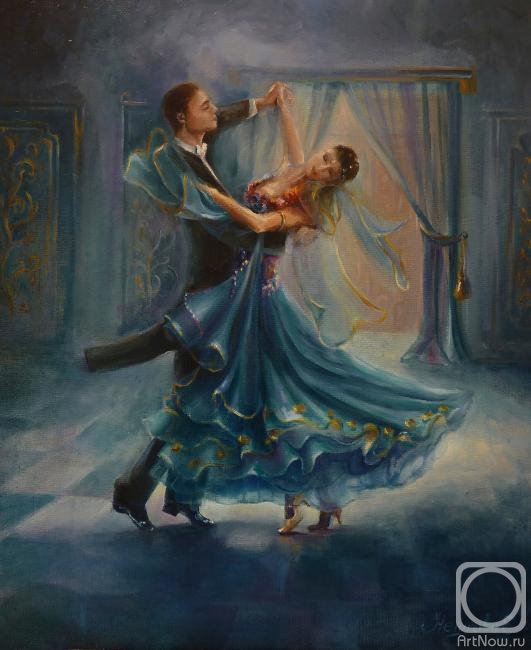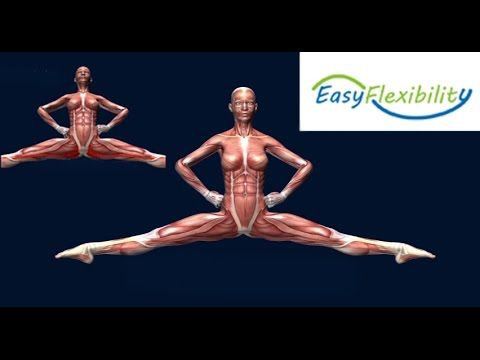How to do cool dance tricks
Insanely Cool Dance Moves That'll Set the Stage on Fire
If you want to steal the show on a cool and happening occasion, you better teach yourself to dance. Out of so many dance forms, learning a few moves from some of them will easily do the trick!
“…Take one step left and one step right
One to the front and one to the side
Clap your hands once and clap your hands twice
And if it looks like this then you doin’ it right…”
-Mambo No. 5 ~ Lou Bega
I couldn’t agree less with what Agnes de Mille says of dancing, “To dance is to be out of yourself, larger, more powerful, more beautiful. This is power, it is glory on earth and it is yours for the taking.” Considered to be one of the most expressive and active forms of art, dancing sums up as a fun social activity that is enjoyed by people of all age groups. Passion, practice, and perfection are essential to make a good dancer.
Whether you plan to impress that girl you have been eying, or to rock the floor at the high school dance, you ought to come up with interesting and cool moves to jazz you up. Be the attention seeker you always wish to be with these dance moves that are uber cool and suave.
B-boying
D-I-S-C-O! That’s right, breakdancing evolved in the 1970s, eventually gaining popularity on the disco-front. Breakdancing, famously known as B-boying is performed to hip-hop and breakbeats. The four elements that form breaking include, toprock, downrock, power moves and freezes.
Toprock
If first impressions matter, toprocking is a sure short way of creating a good first impression. Let’s just say, well begun is half done!
To perform: Start with your feet together while your arms are crossed over your chest. Then, pivot on your left foot and shift your weight on to the right foot. Simultaneously, swing your arms open to form an inclined plane. Return to initial position and repeat the movements with the other foot. Once you master the basic move, you can improvise and create a style that is uniquely you.
The 6-step
The most important part of b-boying, the 6-step forms the backbone of this style of dancing.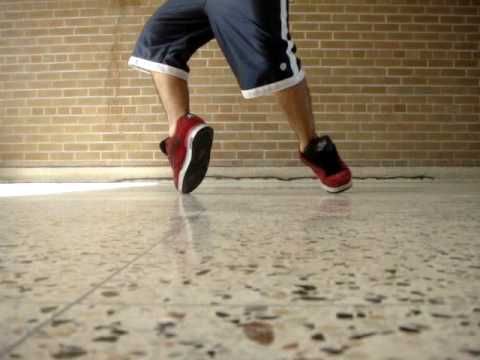 The breaker has to maintain continuous ground contact for this move which means one or the other hand has to be touching the ground at all times. It is this move that helps set the momentum for other complex dance moves.
The breaker has to maintain continuous ground contact for this move which means one or the other hand has to be touching the ground at all times. It is this move that helps set the momentum for other complex dance moves.
To perform: You start this move in a push-up position and bring your right leg forward and extend it in front of the left leg. Lift your left hand thus shifting your weight to the right hand and foot. Bring your left leg closer to the right leg such that it crosses at the knee. Swing the right leg in front of the right hand so that you are in the crab position. Switch hands while the left leg swings around in front of the right leg. Keep the right hand off the ground and extend your legs back into the initial position bring your right hand back down and repeat the steps.
Back Spin: Considered to be an easy move, especially if you have got the right momentum.
To perform: Lie on your right side while extending your arm above your head. Swing your left leg over your head and with a swift motion snap your right foot in the same direction over your head. Lock your feet in position by wrapping the left ankle over the right. Tuck your legs into your chest with your arms resting on your thighs so that, you curl up into a ball. This will have you spinning on your lower back.
Lock your feet in position by wrapping the left ankle over the right. Tuck your legs into your chest with your arms resting on your thighs so that, you curl up into a ball. This will have you spinning on your lower back.
Moonwalk
Made popular by Michael Jackson in ‘Billie Jean’, moonwalk is one of the coolest dance techniques.
To perform: Get into position with your feet shoulder-width apart. Your right foot should be slightly ahead of the left foot in such a way that your left foot is in line with the arch of the right foot. Shift your weight to the left foot and lift the heel of the foot so that your left foot is in the tiptoe position.
Now slide the right foot back to align it with the arch of the left foot and shift the weight to the right foot. Remember, you have to keep shifting your weight to the foot that is in the tiptoe position. Besides, the foot that is flat against the ground is always the one that is moving.
The Worm: Also referred to as the dolphin, it basically replicates the movement of a worm.
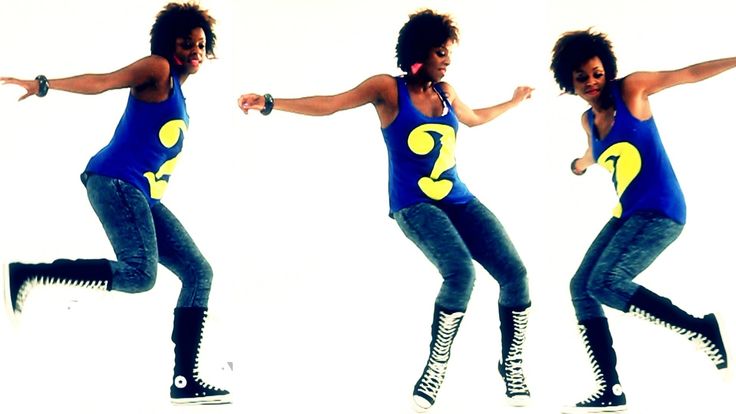
To perform: Start with lying face down on the floor, bend your legs at the knees so that you have your feet up in the air. With a kicking movement, send your feet off the ground. Crunch your stomach and lift your hip off the ground, then arch your chest and straighten your hips. Get your lower body to touch the ground while you lift your upper body higher up the ground. Clap your hands on the floor for a touch down and repeat the steps all over again.
Jazz Dance
“Dance is music made visible.” ~ George Balanchine
What do you get when you mix fun and energy together? It’s jazz, and its peculiarity lies in the individuality and improvisation of the dancer. Jack Cole is considered to be the father of ‘theatrical dance technique’. This dance technique combines various dance techniques like tap and ballet besides also incorporating African-American dance moves.
Split leap: Flexibility and strength are the required elements to perform this dance move.
To perform: Begin with your feet together and your hands to your sides.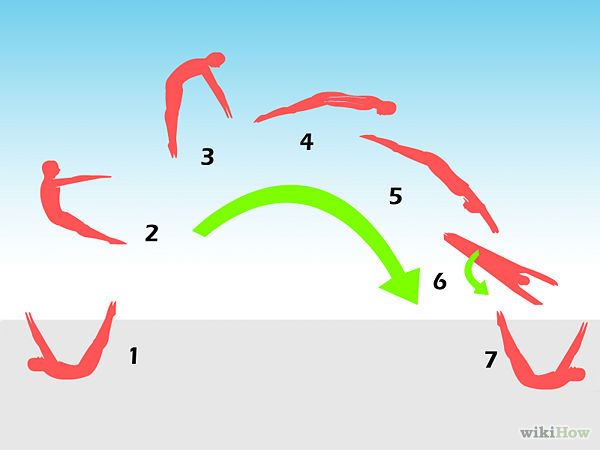 Get in to the crouching position on your toes and place your hands on the floor. Using your hands thrust yourself upwards, jump straight pushing yourself higher off the floor. Once in the air, pop your legs out to the sides so that your legs are parallel to the ground and your shoulder. Keep your toes pointed and your knees straight. Last but not the least, don’t forget to try out the different styles of split jumping.
Get in to the crouching position on your toes and place your hands on the floor. Using your hands thrust yourself upwards, jump straight pushing yourself higher off the floor. Once in the air, pop your legs out to the sides so that your legs are parallel to the ground and your shoulder. Keep your toes pointed and your knees straight. Last but not the least, don’t forget to try out the different styles of split jumping.
Chassé
A pattern formed by gliding to either sides, which is what gives its name chasse, which means to slide. It can be performed solo or with a partner.
To perform: Start with your feet together and the legs bent at the knees. Take a step to the right with your right leg and quickly bring your left leg close to your right with a gliding motion. Which means you step, get feet together and again step to seem like gliding on the dance floor. Repeat the steps starting with the left foot.
The Hammer
To perform: Start with your arms relaxed by your side and your feet together. Bend and lift your right leg forming a right angle with the floor. Lift and bend your arms with your elbows jutting to the sides, parallel to the ground. Lower your right leg while sliding your left leg backwards and leaning forwards. Lower your arms and stand on your left toe shifting the weight to the right leg. Repeat the steps with the left leg.
Bend and lift your right leg forming a right angle with the floor. Lift and bend your arms with your elbows jutting to the sides, parallel to the ground. Lower your right leg while sliding your left leg backwards and leaning forwards. Lower your arms and stand on your left toe shifting the weight to the right leg. Repeat the steps with the left leg.
That’s not all! You have many more dance moves to try out from. There’s hip hop, salsa, and jive, each bringing out a different move allowing the dancer to set the stage on fire. Keep grooving!!
10 Basic Dance Moves Anyone Can Learn
Do you ever watch someone dance and wonder how they come up with moves so easily?
Great dancers often master a specific set of moves that they can fall back on again and again.
Read on for 10 basic dance moves you can learn in minutes and use every time you wanna dance.
P.S. You can learn all of these moves for FREE on STEEZY Studio! No cc required. 😉
1. The Two-Step
When I first started dancing at parties, the Two-Step was the first move that truly came naturally to me.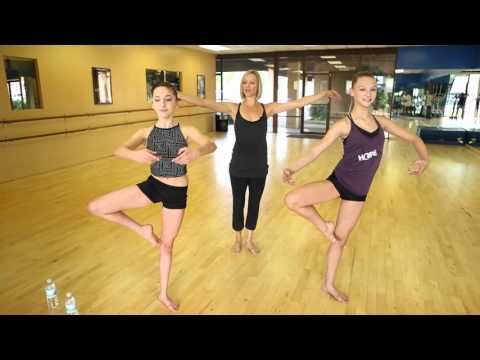
It really is as simple as stepping from side to side to the beat!
If you're looking for something foolproof that allows you to just groove and enjoy the music...
Boom. Here it is.
2. The Monestary
This move was born in a club called Monestary out in St. Louis!
It’s built on a Two-Step, so if you took that class, you’ve already got a foundation for the footwork.
But rather than bringing your feet together, you’ll tap them to the front with your knee and foot turned inward.
Then, as you tap the feet, you’ll move your arms and shoulders in a circular movement.
3. Booty Pop (Side To Side)
Like the Woah, this sexy move is super TikTok-friendly – but with more feminine energy.
To do a booty pop to the side, you’re gonna bend your knees, put your hands on one knee, and then bring the other leg from bent to straight while turning your knee inward.
If you’re a long-haired baddie, be sure to keep all your hair on one side so it doesn’t flop in your face as you pop!
Read this article on How To Dance Sexy to get more tips on pulling off moves like this one!
4.
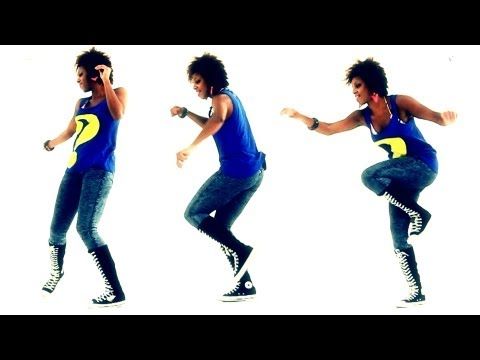 The Billy Bounce
The Billy BounceSurprise – this club-ready move is built on… a bounce!
But what makes it unique is that your knees will come inward on each bounce rather than just up and down.
Once you’ve got the funky lil knee bounce down, you’ll add in an upward kick on each side.
The best thing about this move is that while the footwork takes a few minutes to learn, you don’t necessarily need to add an arm movement to make it look cool.
Just keep your arms front and center.
5. The Woah
Even if you’re not actively involved in the dance community, you’ve probably seen people hitting the Woah – on TikTok, Reels... all over your newsfeed!
Whether you wanna make a viral video of your own, or you’re just looking for a fun, basic dance move to pull out at the clerb, this one is too good not to learn.
Since the locking arm motion is so sharp and pronounced, use the Woah to accent the heaviest bass beats in your favorite songs.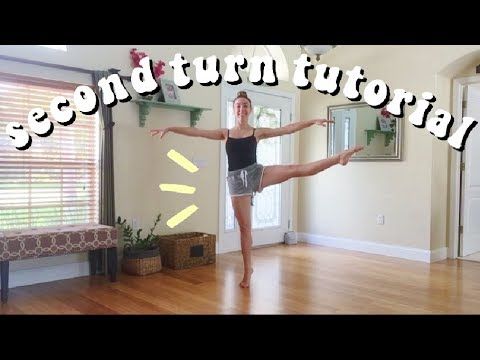
6. The Dougie
Yes, the Dougie is a real dance move!
Like the Two-Step, you’ll be shifting your weight from side to side, but this time, adding some shoulder movements and a lil more attitude.
Try this one out to some songs other than the one that made it famous – you’ll find it works with any hype beat.
7. Scoop Arm Into Hip Sway
Sooo this one is more of combo than a move, but it only takes a few minutes to learn and it works with any fun sassy song…
So it deserves to be here, ok?!
For this move, you’re gonna scoop your arm across your chest, then bring it over your head, and finally point it in front of your chest.
Once you point the arm in front of you, you’ll sway your hips from side to side and groove it out.
8. The Bust Down
The Bust Down was popularized by LA rapper, Blueface, in his 2019 club jam “Thotiana”.
You’re gonna grab your belt, put one arm in the air, and allow your body to dip with the beat.
Note: Licking your eyebrows like Blueface is fun, but not required. 😛
9. The Biz Markie
The Biz Markie is an old school party dance inspired by, you guessed it, rapper Biz Markie!
It rose to popularity in the 90s, when Biz Markie himself began performing it on stage.
As you practice it, remember to allow your shoulders to bounce – the bounce is what gives this move its cool, laidback flavor.
Wanna learn more about classic Hip Hop moves? Read this: How To Dance Hip Hop for Beginners
10. The Humpty
For this bouncy move, you’re gonna circle your hips to one side as your bend your knees.
Then, you’ll jump and cross your legs, allowing your feet to tap the floor briefly before you jump back to your original legs apart position.
Once you’ve got that down, you can complete the move by adding in a windmill motion with your arms.
The leg cross in this move makes it perfect for any Hip Hop song that features a double bass (aka that BOOM BOOM sound that you hear in songs like “Lip Gloss” by Lil Mama)
We hope you enjoyed learning some of our favorite basic dance moves.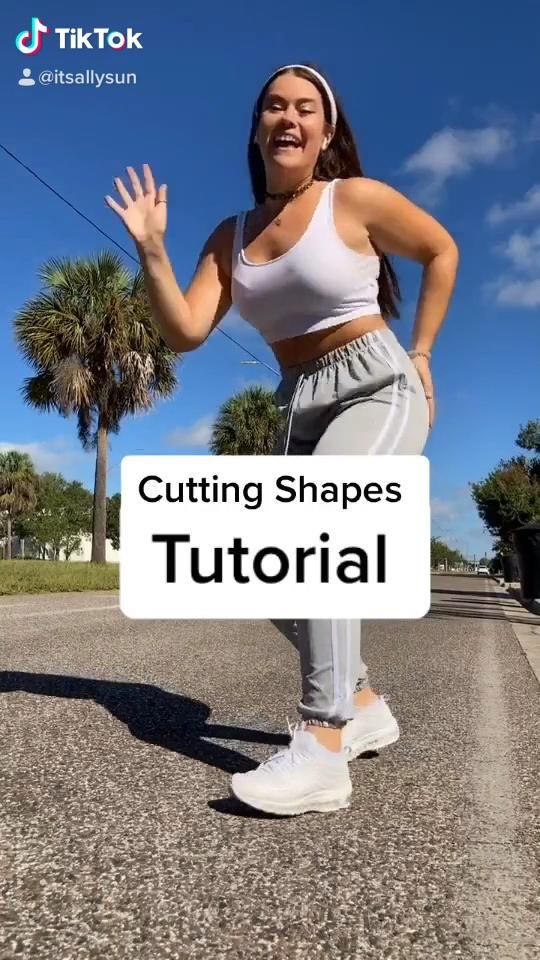
Of course, this list is just a start!
In addition to the 10 moves on this list, STEEZY Studio has 100+ other FREE beginner classes where you can learn step-by-step from the world’s best teachers.
What To Read Next:
30-Minute Dance Workouts That'll Trick You Into Becoming A Better Dancer
How To Learn Popping
How To Start Dancing Hip Hop For Beginners
How To Learn Dance At Home
Acrobatic dance tricks | choreograph.com
Natalia Dovbysh Articles
Today I want to touch on the topic of acrobatics. In recent years, many teams have begun to use acrobatic stunts in their numbers. In my opinion, it really decorates the room.
The only thing worth remembering is that dance is primary, and acrobatics only complements and decorates it.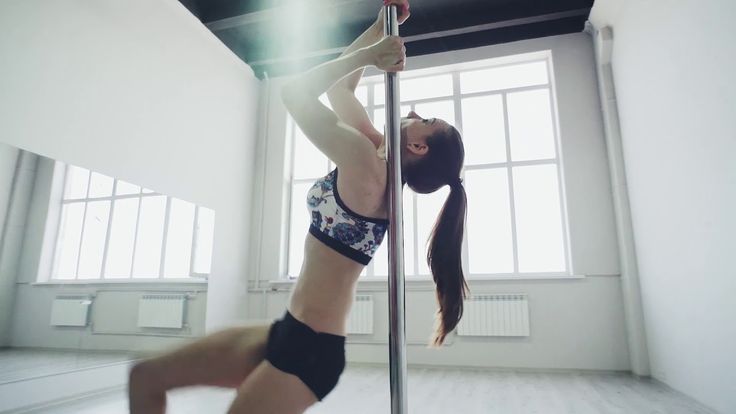 Some choreographers get too carried away and forget about it. As a result, we get not a dance, but an acrobatic sketch.
Some choreographers get too carried away and forget about it. As a result, we get not a dance, but an acrobatic sketch.
Here is an example of what not to do.
I don't know about you, dear friends, but for the first time I noticed the use of acrobatic elements in the performances of the Todes show-ballet. And I really liked it! Elements of acrobatics greatly enhance the effect and give the usual number an element of show.
The well-known team “Exciton” also widely uses elements of acrobatics in their performances, which make the performances brighter, stronger, enhance the impression.
I think a lot of people have seen this Exciton video.
Great, right? Of course, behind this is a huge work, both children and teachers. But what an effect!
But what an effect!
Of course, not all choreographers can afford to introduce acrobatic elements into their performances. There are many reasons. Most importantly, you need to know how to do it. Here, too, there is a technique. You can't just tell a child, "Make a wheel!" He does not know how, he is afraid. As a result, nothing comes out. It is good if the teacher can show how it is done, sort it out, but not every teacher is given this due to age or any other reasons. How then to be?
Secondly, it is imperative to observe safety precautions. This is a hazardous activity. Be sure to study all the elements under the supervision of a teacher and on mats.
I won't go far. As they say, a living example is nearby. Having moved to a new place of residence 8 months ago, I gave my daughter to the team, where choreography with elements of acrobatics is in progress.
My surprise knew no bounds when I saw that the children were doing somersaults, flips, etc. on the wooden floor.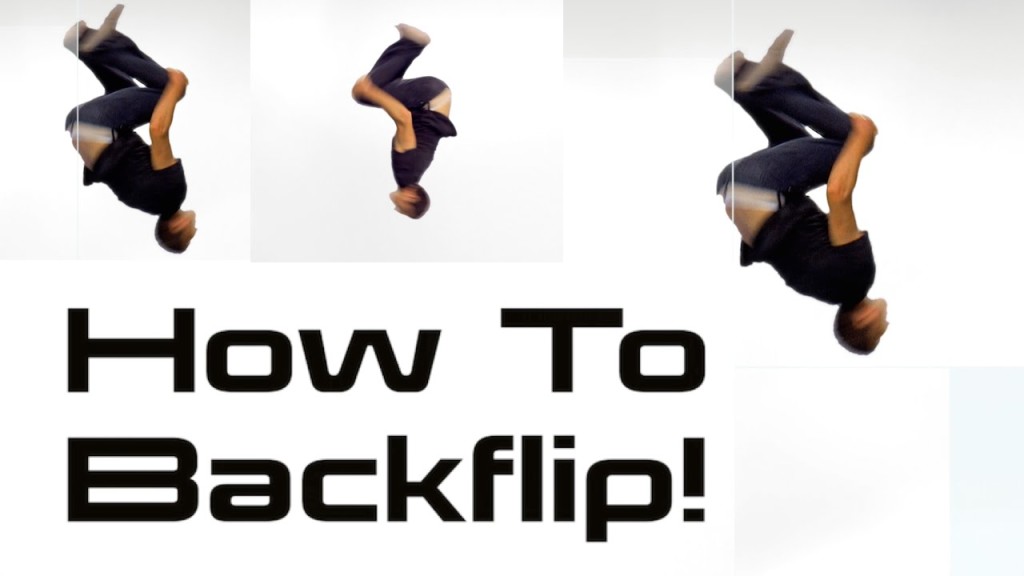 After classes, my daughter came with a red back, I generally keep quiet about bruises. I went to class reluctantly.
After classes, my daughter came with a red back, I generally keep quiet about bruises. I went to class reluctantly.
Then something happened to our neck, apparently some kind of displacement of the vertebrae. When you turn your head it sounds like something clicks. At the same time, the daughter said that the teacher did not insure her. Yes, and others too. She just said, "Do it!" Here is the result!
To my question: “Why don’t children practice elements on mats?” the teacher answered: “They will not have mats on stage. Let them get used to it!” I decided to consult the experts.
First of all I turned to my cousin, she is an acrobatics coach. She was very surprised by this teaching method and said that they work out all the elements only on mats. Children are placed on the bare floor only when they are ready for it. Then I turned to another specialist with the same question. The answer was the same.
In general, I failed to get through to the teacher, so we decided to leave this team.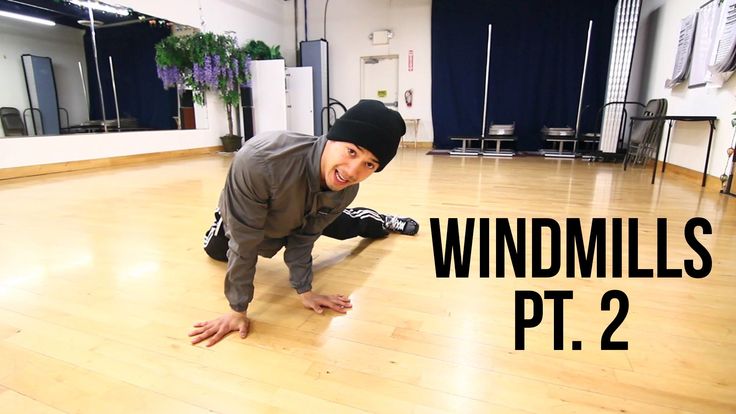 As a memory from the classes, only the displacement of the cervical vertebrae remained. Not very pleasant, of course!
As a memory from the classes, only the displacement of the cervical vertebrae remained. Not very pleasant, of course!
Therefore, dear choreographers, if you don't know something, then you should definitely consult with specialists, and not engage in amateur performances. Children's health is the most important thing! This must be remembered!
The best thing is to take advanced training courses to experience everything for yourself. Although, of course, not every teacher, due to age and physical data, will be able to do this. In this case, you must definitely buy a book or video course in order to at least learn the teaching methodology, and not engage in amateur performances.
In connection with today's topic, I have a few questions. Do you use elements of acrobatics in your team? What elements do you study and where did you learn it yourself?
Thank you for your answers!
Sincerely, Natalia Dovbysh
Answers to all your questions in the Club Choreographer Online
35 comments
Tricks - Page 2 of 6
Element SUPERMAN is perhaps one of the most popular pole tricks in the world, and at the same time the most spectacular, with the relative simplicity of its execution.
English versions of the name: Batman, Superman.
Trick name origin: This element is hard to confuse with others! It is worth stretching your free hand forward, and now you are already a superhero flying to help someone!
Execution
There are a lot of exits to this trick: through the hang on the far leg, through the fold, “barrel”, “martini”, etc. The most popular exit option is through the hanging on the far leg by throwing it to the other side of the pole.
Important: The element looks the more aesthetically pleasing, the more the following nuances of its execution are present:
— Good deflection in the back;
- Optional gestures - "decorations", first of all - the dancer's free hand stretched forward towards the audience with a beautifully opened hand;
- Visual contact with the viewer, because this is one of the few tricks that allows the performer to "work with his face" and show his acting skills.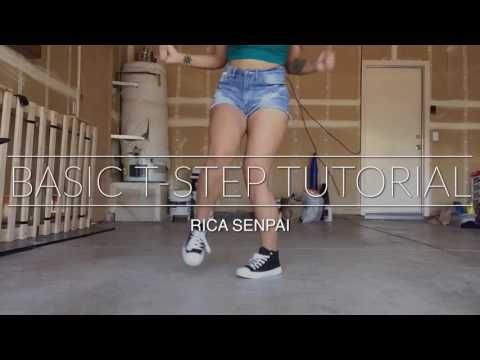
Note: For the first time in the course of mastering this trick, students experience severe pain when squeezing the pole with their feet. Don't worry, this will pass soon, and the element will seem to you, let's not be afraid of tautology, elementary! The only thing that matters here is practice.
Element STARFISH is one of the most incredible and gravity-defying advanced and pro level stunts.
English name: StarFish.
Name variations: Starfish.
Origin of trick : It is believed that the "Starfish" element was invented by the Hindus to be performed on the mallakhamba. If you watch videos of Hindu wrestlers performing, you will definitely find this element. The trick got its name due to the outward resemblance of the pose to the silhouette of a starfish.
Version
First you need to learn how to perform the element from the floor.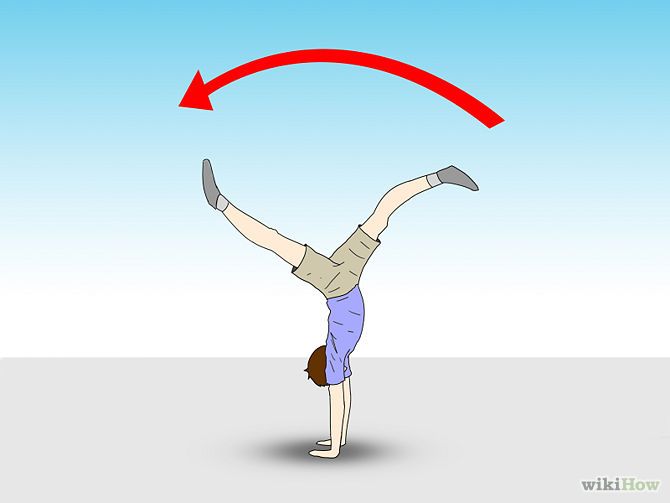 Place your far foot on the base of the pole and hook the toe of your near foot on the pole at about head height. The knee of the upper leg should be turned towards the ceiling to increase traction. If you feel that you are holding on, let go of your hands: first the lower one, then the upper one. Important: The element is quite difficult and painful, so it is worth training it when your level of pylon skill is already quite high. When performing a trick not from the floor, but from the pylon, be sure to lay a mat or ask a friend to insure you.
Place your far foot on the base of the pole and hook the toe of your near foot on the pole at about head height. The knee of the upper leg should be turned towards the ceiling to increase traction. If you feel that you are holding on, let go of your hands: first the lower one, then the upper one. Important: The element is quite difficult and painful, so it is worth training it when your level of pylon skill is already quite high. When performing a trick not from the floor, but from the pylon, be sure to lay a mat or ask a friend to insure you.
Element FELIX FOLD is a subject of sigh for many even advanced pylonists and Hit No. 1 of 2008, which forever inscribed the name of its author in the history of Pole Dance!
Alternative names: Chicken on a spit, Chicken on a spit, Spachcock.
English name: Spatchcock.
The origin of the trick: " Felix Fold" is the original trick of the Australian performer and current Director of her own Pole Dance Academy in Melbourne Felix Cane (Felix Cane), who, according to her, has been training this element for 3 years.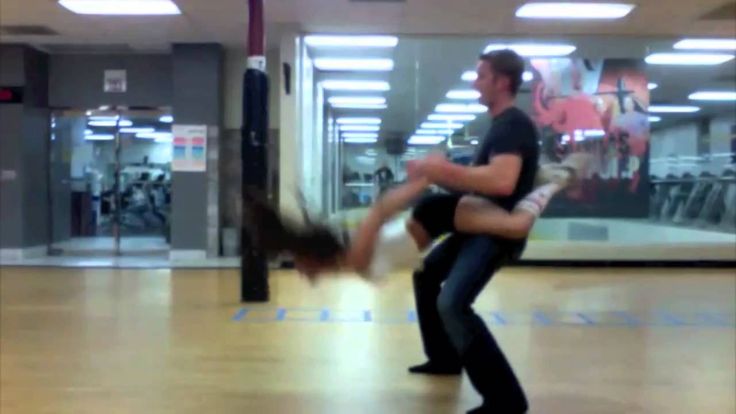 Largely due to this beautiful element, Felix won the Miss Pole Dance Australia - 2008 competition. Subsequently, the trick quickly acquired a new name - Spatchcock, or Chicken on a Spit, since the pose, especially on a dynamic pylon, invariably evoked corresponding associations in the audience.
Largely due to this beautiful element, Felix won the Miss Pole Dance Australia - 2008 competition. Subsequently, the trick quickly acquired a new name - Spatchcock, or Chicken on a Spit, since the pose, especially on a dynamic pylon, invariably evoked corresponding associations in the audience.
Version
One of the possible entrances to the element begins with the “Sholdermount” with a female grip. Raise your legs up and hook the pole with the heel of the leg that is on top of you, between your hands. After that, move your lower hand to point-blank range, pushing off the pole to hook the pole with your other foot from below. Move your hand in front of the pole so that your shoulders are resting on the pole and push your torso further behind the pole. Now you can release your hands.
Important: To perform the trick, you must have worked out a confident "Fold" * with open legs! You need to be able to touch the floor with your chest with your heels lying on the cubes. Remember that you need to pull the “Fold” with your back arched and try to reach the floor not with your shoulders or even with your chest, but with your stomach (abs muscles).
Remember that you need to pull the “Fold” with your back arched and try to reach the floor not with your shoulders or even with your chest, but with your stomach (abs muscles).
Element SCORPIO is one of the most popular tricks for beginners.
English name: Butterfly.
Name variations: Butterfly, Swastika.
Not to be confused with: Scorpio trick (hanging on the near leg).
Origin of the name of the trick: This is exactly the case when there is a significant difference between the Russian and English names of the same trick, which can cause confusion. In many foreign schools, under the trick "Scorpio" ("Scorpion") they mean Hang on the near leg , with a similar position of the legs, and the element we are considering is usually called 9 abroad0064 "Butterfly" ("Butterfly"). In Russia, the name “Scorpio” is much more common, and “Butterfly” is a similar position with straight legs “ Extended Butterfly” , which we considered earlier.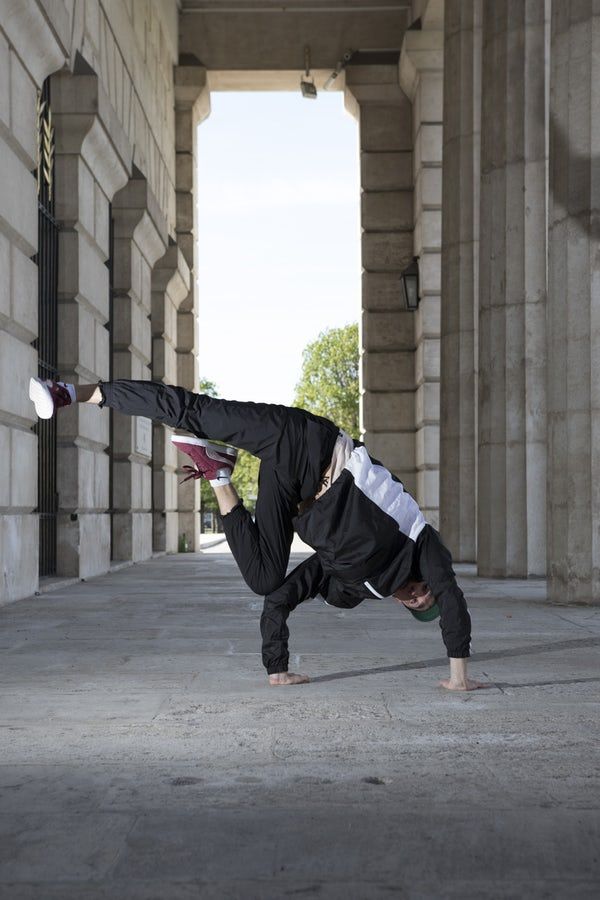 Be prepared to meet both variants of the name for this element.
Be prepared to meet both variants of the name for this element.
Version
The trick is performed from a hang on the far leg. The far hand is placed on the pylon near the thigh with the ring up, or with an eversion grip. The second hand is placed in a thrust, after which it is necessary to deploy the body facing the pylon.
Note: "Scorpio" will look more beautiful if you bend more in the back and pull the toe towards the head into the Ring.
Element FOLD on the pylon is the simplest base level trick.
English name: Inverted pike.
Not to be confused with: Felix crease trick.
The origin of the name of the trick: The trick is a basic one, many elements in pole dance are performed from it. The name "fold" is borrowed from gymnastics, when performing the element, the performer, as it were, "folds in half" - straight legs stretch to the stomach, forming a "fold".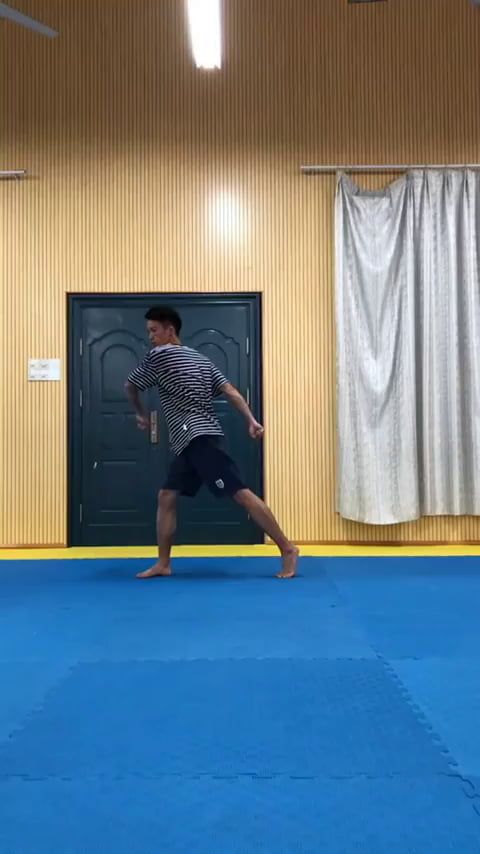 At the same time, in the English version, such a position of the legs is called “pike” (“peak, spear”).
At the same time, in the English version, such a position of the legs is called “pike” (“peak, spear”).
Execution
Hang on the far leg and move the near leg to the stomach, pressing it as close to you as possible. Now the pole is securely clamped between the thigh and the stomach, you can lower the second leg to the stomach in the crease. The legs should be moved straight and in a circle so that the performance is aesthetic.
Note: Many elements use a pole pinch with the near leg. If you master the pleat, it will be much easier for you to do the Jamilla Split, Hanging Change of Legs, etc.
Item SUNRISE is considered suitable for beginners and intermediates.
English name: Sunrise.
Not to be confused with: Superman trick.
Trick name origin: Sun Rise means "Sunrise" in English. The beautiful curves of the body and the hand raised up to the sky - that's what makes us think about the dawn and the beginning of a new day.
Version
The trick is very similar to "Superman", but the grip on the pylon is less stable with it. Most often, an element from the “rider” is performed with the straightening of the upper leg and the turn of the body. And yet, from "sunrise" you can go into "superman" or "sholder".
Proudly named element RUSSIAN TWINE is one of the most famous pylon tricks in the world and, perhaps, one of the most beautiful.
English name: Russian Split.
Trick origin: This twine was named Russian for a reason, because in 2008-2009. he first began to appear at competitions precisely with Russian pylonists. At first, the trick was performed only from the floor, but in 2009 it was “lifted” to the pylon, and now it is included in the trick program of many pole dance artists.
Important to note: The element is quite difficult, because you need not only a good stretch, but also strong arms to keep your body in a horizontal position and then pull yourself back to the pole. Moreover, you need to make sure that the stubborn leg does not slip, because the main support goes to the foot, and there is nothing to insure yourself in case of something. But do not worry, in the hands of an experienced trainer you can not be afraid and master this beautiful and fascinating element in a short time.
Moreover, you need to make sure that the stubborn leg does not slip, because the main support goes to the foot, and there is nothing to insure yourself in case of something. But do not worry, in the hands of an experienced trainer you can not be afraid and master this beautiful and fascinating element in a short time.
Basic trick SLINGSHOT is not an independent, but rather an "intermediate", transitional element, used mainly for climbing with a flip to the pylon.
English name: Chopper, Open-V.
Variants of the name: Footboard.
Origin of the name of the trick: It is obvious that because of the shape of the opening of the legs, this trick is called "slingshot" or "spreading". But the English version is also quite interesting, because “chopper” means helicopter, and your legs reminded the authors of the helicopter blades. You should also pay attention to the name Open-V, as it means opening the legs in a V shape. You will find the qualifier V in many foreign names of elements where you need to hold your legs in a slingshot, such as the V-flag, Shoulder Mount V.
You will find the qualifier V in many foreign names of elements where you need to hold your legs in a slingshot, such as the V-flag, Shoulder Mount V.
Performance
Usually this element is the first "victory" for beginners in pole dance. Ideally, it should be performed solely due to the strength of the abdominal muscles with raising straight (and not at all bent at the knees!) Legs. Hands are placed at the level of the head, the farthest from above, the nearest one from below, as if “embracing” the pylon. You can put your hands higher, but then you will have to pull yourself up during the execution of the element, which complicates the process. You can start learning the trick by throwing the legs bent at the knees and then straightening them, while the pylon rests on the waist.
Important: In order for the hips to rise up, it is necessary not only to make a good leg swing, but also to take the shoulders down, thus outweighing the body. Remember to keep a firm grip on the pylon while doing this.
Remember to keep a firm grip on the pylon while doing this.
Element BIRD OF PARADISE is a trick for the "Advanced/Pro" level from the so-called "second wave of Pole Dance elements".
English name: Bird of paradise.
Not to be confused with: Bird trick.
Trick origin: The Bird of Paradise stunt is relatively new, having become widely known only in 2014. Invented the Marlo Fisken element, a dancer with extensive experience, the creator of the Pole Flow direction. The yoga-inspired trick, due to the similar foothold, was named after the pose "Svarga Dvidasana", which means "Bird of Paradise" in translation.
Execution
The trick is performed from a hang on the far leg. It is necessary to turn the body so that the back "lies" on the pole. Then you need to bring the elbow of the far arm behind the pole, while the neck “hugs” the pole on the other side.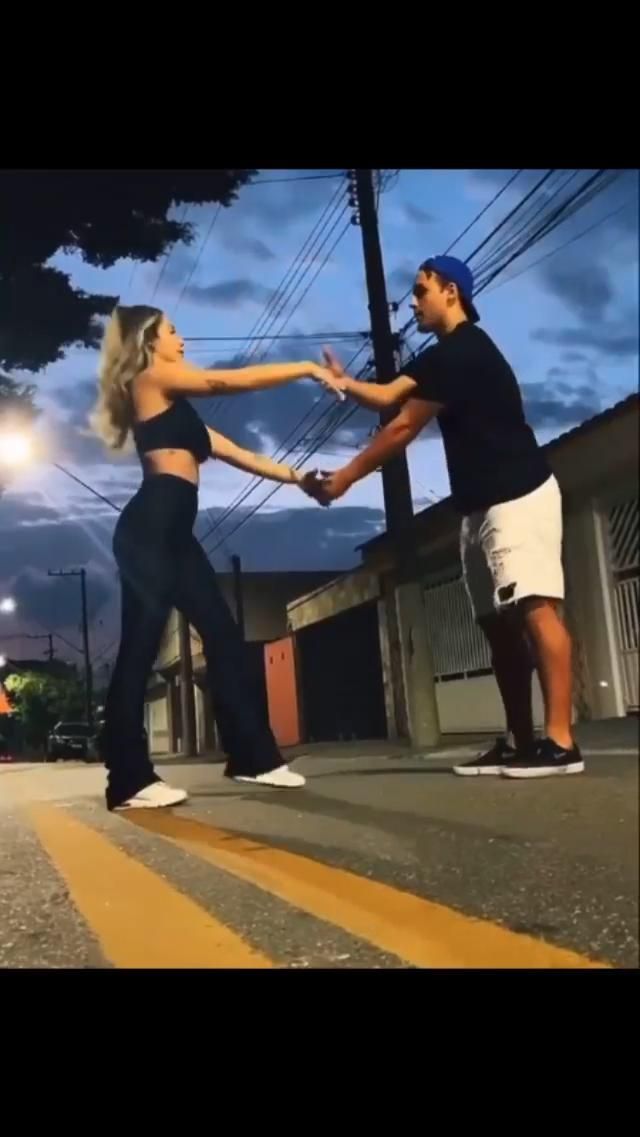 Then pull the nearest leg with your near hand, hug it under the elbow in front and clasp your hands in the castle. Only now is it possible to remove the far leg from the pole and take it back into the split.
Then pull the nearest leg with your near hand, hug it under the elbow in front and clasp your hands in the castle. Only now is it possible to remove the far leg from the pole and take it back into the split.
Note: The trick requires a very good stretch. Before doing it, be sure to warm up your back, sides and shoulder girdle.
Element MARCHENKO'S RAINBOW is a kind of business card of any "pro" level performer, it is this trick that made its author famous all over the world.
Origin of the trick: A beautiful and complex element borrowed from the circus puff in half-dance thanks to the circus performer and later talented pylonist Valeria Poklonskaya (Marchenko). According to Valeria, the most difficult thing was to come up with an entry into this element, and the rest just "came out of nowhere in my head." By the way, the name "rainbow" was not given to the trick by the author, but was given later among half-dancers.


